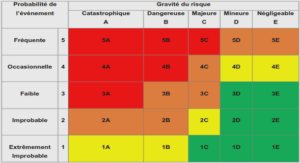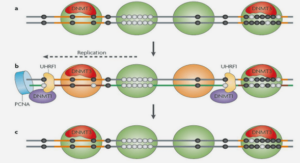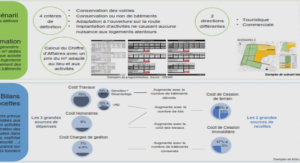Modélisation du renforcement
Comparison with experimental data In the following,
we examine more closely some aspects of our model. In particular, we test the predictions given by expression (7.20) with respect to the effect of the particle size, the temperature and the crystalline orientation. Dependence on particle size It has often been suggested that the critical ligament thickness is independent of the size and nature of the particles.157,158,160,161 Hence, expression (7.20) obtained here for Lc seems to be contradictory. However, the various fits presented below show that the effect of particle size predicted by our model is consistent with experimental data.
We have fitted the data reported by Wu 157 in his seminal study on polyamide-66 toughened with various rubber particles. The values for σB (300 MPa)173 and σY (100 MPa)174 were determined from the literature. The brittle stress σB was measured by Vincent173 with bending tests at a temperature of –180°C and a strain rate of about 103 s-1. The yield stress σY is estimated for a temperature of 20°C and a strain rate of 103 s-1 which is representative of the impact test conditions.
A characteristic length ξ* of 285 nm is obtained which is in the 10 nm-1000 nm range found by KT for a large variety of specimens. As it could be expected from injected samples, 185 Chapitre 7 : Modélisation du renforcement this value is intermediate between the typical 10 nm values reported for highly oriented specimens and the over 1000 nm values obtained for isotropic samples. Lastly, the coefficient C is found to be about 0.1 which is smaller than KT that should be of the order of 1.
This value may reflect the fact that cavitated particles still transmit some stress so that plastic deformation may not be as easily activated as predicted with perfect voids or it could more possibly be attributed to some errors on the values of σB and σY. Using these values, the critical ligament thickness Lc is plotted in Figure 111 as a function of the particle size. T
he slope of this linear relation is rather low so that the range of critical ligament thickness that is scanned with the usual particle sizes (100-1000 nm) is relatively small (300-380 nm). Still, this effect is significant and arises some interesting perspectives as we can see in Figure 112 where the data of Wu have been reproduced. On this graph showing Izod impact strength as a function of ligament thickness, the data points corresponding to different size ranges are labeled with distinct colors.
Dependence on test temperature
Temperature is an other important parameter of toughening which mostly affects the yield mechanisms. Accordingly, we introduce the temperature dependence of σY using an Eyring description given by expression (7.23). These predictions are applied to experimental data obtained by us with toughened polyamide-12 and by Borggreve et al.159 with toughened polyamide-6. These data are reproduced in Figure 115 and Figure 116 together with the 188 Chapitre 7 : Modélisation du renforcement predictions obtained for the particle sizes used in these systems.
The values of ∆H, ν and 0 were fitted from the data given in ref. 21. In the case of toughened polyamide-12, the calculated curves give a fairly good description of TDB as a function of the ligament thickness, L0. In particular, the effect of particle size seems quite significant and the predictions give some guides to understand the cloud of points that was obtained. Moreover, the low value obtained for ξ* (10 nm) suggests that the matrix is highly oriented as compared to the polyamide-66 systems of Wu.






